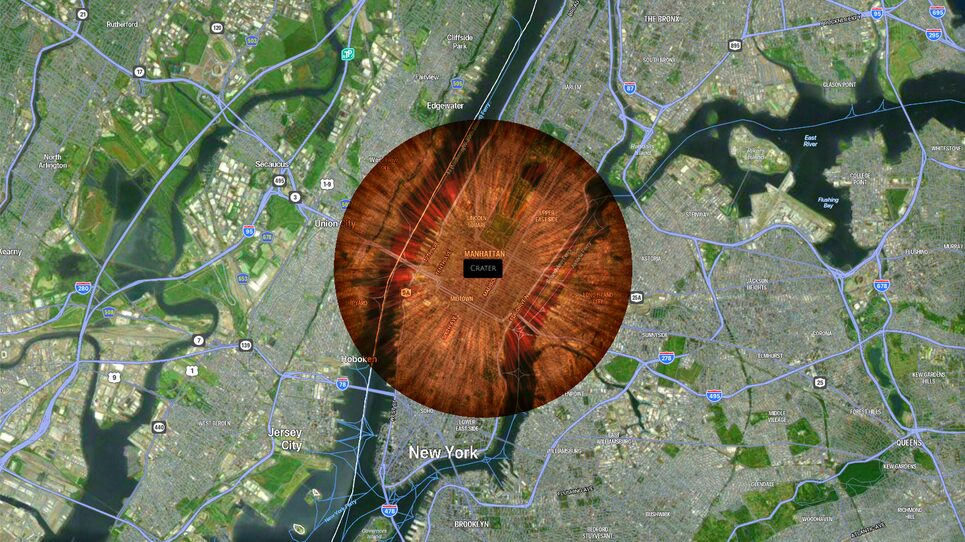
Neal Agarwal developed Asteroid Simulator to show the potentially extreme local effects of different kinds of asteroids. The first step is to pick your asteroid, with choices of iron, stone, carbon, and gold, or even an icy comet. The asteroid's diameter can be set up to 1 mile (1.6 kilometers); its speed can be anywhere from 1,000 to 250,000 miles per hour; and the impact angle can be set up to 90 degrees. Once you select a strike location on a global map, prepare for chaos.
"I grew up watching disaster movies like Deep Impact and Armageddon, and so I always wanted to make a tool that would let me visualize my own asteroid impact scenarios," Agarwal said to Gizmodo in an email. "I think this tool is for anyone who loves playing out 'what-if' scenarios in their head. The math and physics behind the simulation is based on research papers by Dr. Gareth Collins and Dr. Clemens Rumpf who both study asteroid impacts."
Once you've programmed the asteroid and launched it at your desired target, Asteroid Simulator will walk you through the devastation. First, it'll show you the width and depth of the crater, the number of people vaporized by the impact, and how much energy was released. It will then walk you through the size and effects of the fireball, shock wave, wind speed, and earthquake generated by the asteroid.
NASA has its eyes on more than 19,000 near-Earth asteroids. While no known space rock poses an imminent threat to Earth, events like the 2013 Chelyabinsk impact in Russia remind us of the need for robust planetary defense. Just this year, NASA tested an asteroid deflection strategy via its DART spacecraft, to resounding success.



Reader Comments